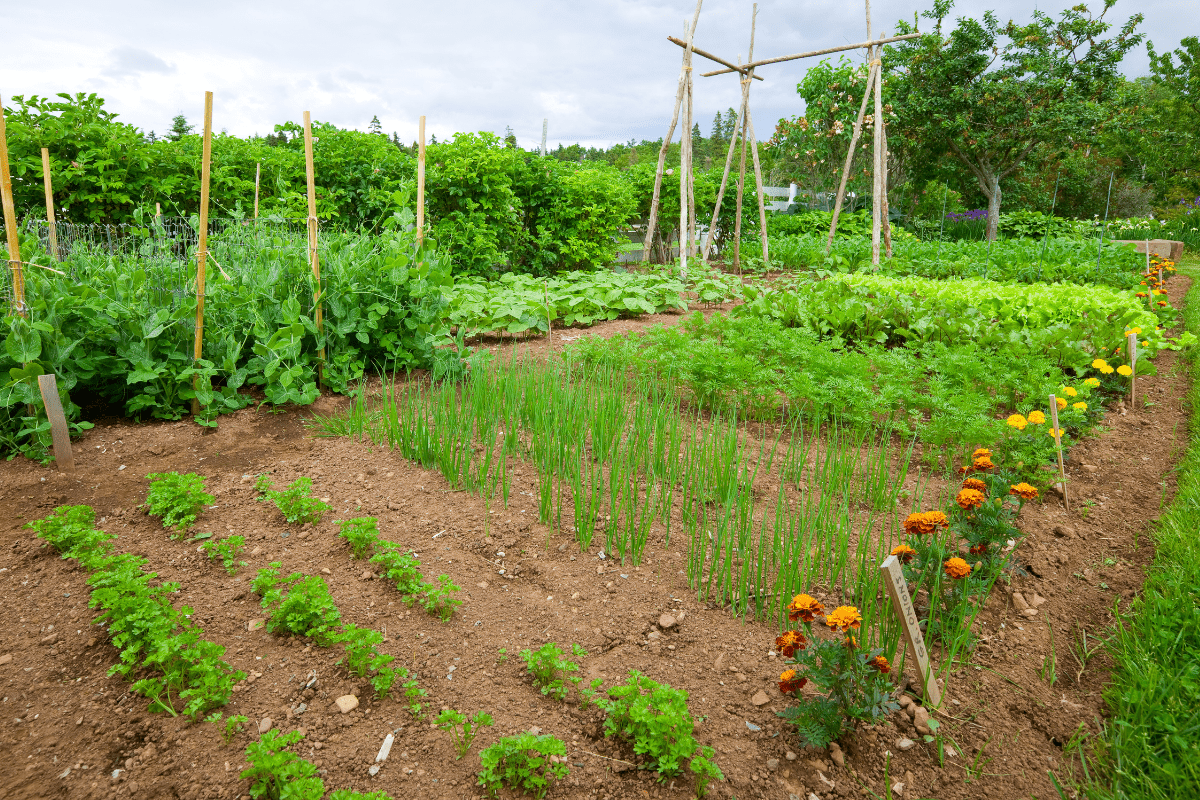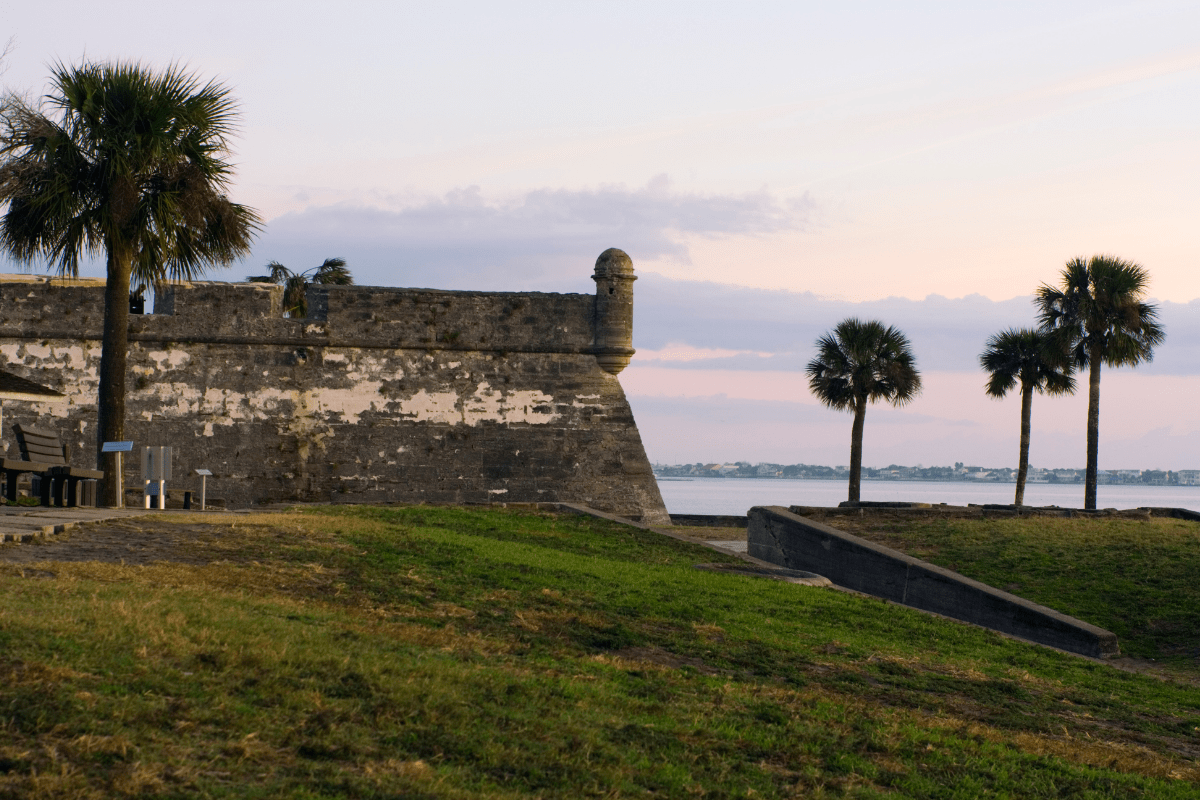While the rest of the country is scraping ice off their windshields and dreaming of spring, Florida gardeners are harvesting juicy strawberries, crisp lettuce, and sweet citrus. This subtropical wonderland flips the traditional growing calendar on its head, offering fresh local produce 365 days a year… if you know where to look and when to plant.
Understanding Florida's wild and wonderful growing zones
Florida stretches over 800 miles from the Alabama border to the Keys, creating a mind-boggling variety of growing conditions. It's like having three different states stacked on top of each other, each with its own personality and planting schedule.
Up in North Florida (zones 8b-9b), winter actually feels like winter. Temperatures can dip down to 20-30°F, which sounds balmy to a Minnesotan but counts as legitimate cold here. This chill enables northern favorites like peaches and blueberries to thrive. Meanwhile, a Tallahassee gardener waits until March to plant tomatoes while their Miami counterpart is already making salsa in January.
Central Florida (zones 9b-10a) hits the sweet spot between subtropical and temperate. This is citrus country, where oranges and grapefruits reach perfection. The weather behaves itself most of the time, though summer can still feel like living inside a terrarium.
South Florida (zones 10a-11b) is America's only mainland tropical fruit paradise. When temps rarely drop below 40°F, you can grow mangoes, avocados, and papayas like they're going out of style. Of course, when summer hits and North Florida reaches 95°F with humidity that could wilt a cactus, even heat-loving okra starts begging for shade. But hey, that's the price we pay for growing tropical fruits that make the rest of the country jealous.
Winter: When Florida becomes America's salad bowl
December through February: Peak vegetable season
Winter in Florida is basically opposite day. While everyone else hibernates, we're out harvesting the best vegetables of the year. With temperatures hovering between 50-75°F and humidity taking a blessed vacation, conditions are absolutely perfect for leafy greens and cool-season crops.
Lettuce reaches peak quality during these months, becoming sweet and tender without that bitter edge that makes kids push their plates away. From Homestead to Jacksonville, farmers are pulling in mountains of spinach, kale, collards, and Swiss chard. Home gardeners experience their most productive months, finally understanding why their northern relatives get so excited about spring.
The real showstopper is our citrus season. Cool nights work magic on oranges, grapefruits, and tangerines, concentrating sugars until they hit that perfect sweet-tart balance. Valencia oranges dominate the later spring harvest, while navel oranges and ruby red grapefruits steal the show in midwinter. Florida produces about one-third of America's citrus, generating $240.6 million in orange sales alone according to 2024 USDA data.
Strawberry mania and winter blooms
Plant City transforms into strawberry central from December through April, supplying roughly three-quarters of America's winter berries. These aren't your sad, white-centered grocery store impostors either. Florida strawberries in season taste like nature's candy, sweet enough to make you forget they're healthy.
Winter flowers paint the landscape too. Pansies, petunias, and snapdragons thrive in the mild weather, often lasting clear through May if you planted them in October. Native plants like coral honeysuckle and wild azalea begin their show, bringing in early pollinators who are probably confused but grateful.
Spring: The explosion of everything
March through May: Overlap season
Spring creeps across Florida like a very slow wave, starting in South Florida by late February and eventually reaching the Panhandle by late March. This is when things get really exciting because cool-season crops overlap with warm-season plantings, creating the greatest diversity of produce all year.
Blueberry farms from Alachua to Polk County hit their stride in April. U-pick operations charge $3-6 per pound for varieties like Emerald and Jewel, developed specifically for Florida by University of Florida researchers. North Florida's unique chill hours enable this $80 million industry that probably makes Georgia a little nervous about their whole "peach state" reputation.
Critical planting window for summer crops
March through May represents the make-or-break planting window for summer vegetables. Every Florida gardener knows this dance: you need to get tomatoes, peppers, squash, and cucumbers established before the real heat arrives. Plants need strong root systems before temperatures consistently exceed 90°F, or they'll throw in the towel faster than you can say "blossom end rot."
This is also when Plant City's strawberry season winds down just as South Florida's mango trees start dropping their aromatic treasures. Early varieties like Haden ripen in May, followed by Tommy Atkins and the coveted Keitt mangoes that last through August. If you've never eaten a perfectly ripe Florida mango, you haven't really lived.
Spring flowers showcase Florida at its absolute best. Azaleas create stunning displays in March and April that make every neighborhood look like a postcard. As cool-season annuals fade, heat-tolerant replacements like zinnia, salvia, and angelonia take over. Native wildflowers including blanket flower and butterfly weed establish themselves, basically rolling out the red carpet for summer pollinators.
Summer: Survival of the heat-adapted
June through August: The trial by fire
Summer separates the rookies from the real Florida gardeners. When temperatures soar above 90°F and humidity makes the air feel like soup, only truly heat-adapted crops survive without protection. This is when you'll see the diehards installing shade structures that provide 30-45% filtered sunlight, because research confirms these systems can reduce temperatures by 10°F.
Traditional summer vegetables basically give up and go home, but alternatives actually thrive in our sauna-like conditions:
- Okra produces like crazy
- Southern peas fix nitrogen
- Sweet potatoes spread everywhere
- Malabar spinach stays tender
- Yard-long beans keep producing
- Amaranth laughs at heat
- Cassava grows year-round
- Chaya provides endless greens
Tropical fruit paradise
Summer might be tough on vegetables, but it's prime time for tropical fruits in South Florida. Mango varieties parade through farmers markets from June through August, each with distinct flavors and textures that make store-bought versions taste like cardboard. Avocados reach peak abundance with varieties like Simmonds and Lula joining year-round producers like Monroe.
This is when exotic fruits really shine. Lychee, longan, sapodilla, and jackfruit appear at specialty markets and u-pick farms, offering flavors most Americans have never experienced. Up in North Florida, figs and muscadine grapes ripen in the scorching heat, proving that every region has its summer specialty.
Fall: Florida's second spring
September through November: The great reset
Fall brings sweet relief as temperatures drop and humidity decides to take a break. This creates Florida's "second spring" for vegetable production, and honestly, it might be even better than actual spring. September is all about soil prep, leading to October planting of pretty much every cool-season crop imaginable.
UF Extension recommends planting broccoli, cauliflower, Brussels sprouts, and cabbage in early fall for winter harvest. Root vegetables like carrots, beets, turnips, and radishes absolutely love the cooling soil. Smart gardeners succession-plant lettuce every two weeks for continuous harvest through spring. Herbs including cilantro, parsley, and dill establish quickly in fall's goldilocks conditions.
Transitioning gardens and early citrus
Fall flowers help gardens transition from summer's tropical vibe to cool-season charm. Marigolds, chrysanthemums, and ornamental kale join returning pansies and petunias. Native plants like goldenrod, asters, and blazing star support migrating pollinators while adding texture that makes your yard look like you actually know what you're doing.
Early citrus varieties start their show with Hamlin oranges and Dancy tangerines appearing at markets. The agricultural rhythm picks up speed as farmers gear up for winter's bounty while home gardeners celebrate the return of weather that doesn't require a shower after five minutes outside.
Where to find Florida's seasonal bounty
Finding fresh, local produce in Florida is easier than explaining to your northern relatives why you're wearing shorts in January. The state supports an incredible network of farmers markets, u-pick operations, and CSA programs that make grocery stores look boring by comparison.
Farmers markets: Community and cucumbers
The Winter Garden Farmers Market in Orlando takes the crown as Florida's best, according to American Farmland Trust. With over 100 vendors every Saturday from 8am-1pm, covered pavilions, live music, and actual parking, it's basically Disney World for food lovers. St. Petersburg's Saturday Morning Market ranks among the Southeast's largest, while smaller community markets offer intimate settings where farmers remember your name and save you the good stuff.
U-pick farms: Family fun with savings
U-pick farms offer adventures that save serious money, typically 40-60% below retail prices. Southern Hill Farms in Clermont manages 120 acres including 40 acres of blueberries and 15 acres of strawberries. These operations hit different peaks throughout the year:
- Strawberries: December through April
- Blueberries: March through June
- Citrus: November through April
- Sunflowers: Seasonal bonus rounds
Many farms like Parkesdale Farm Market in Plant City combine u-pick fields with market stores, perfect for when you want fresh strawberries but don't want to bend over for an hour in the sun.
CSA programs: Weekly produce surprises
Community Supported Agriculture programs typically run November through May, aligning with Florida's primary growing season. For $20-40 weekly, you get a box of ultra-fresh produce that often includes things you've never heard of but will soon love. Bee Heaven Farm in Homestead includes rare tropical fruits that never make it to regular stores, plus recipes so you know what to do with that strange spiky thing.
Growing your own: Florida-style success
Growing food in Florida requires throwing out everything you learned from northern gardening books and embracing our unique challenges. Sandy soil that drains faster than a colander means raised beds aren't just nice to have… they're essential.
Build beds at least 8 inches high and fill with a 50/50 mixture of compost and topsoil. This creates nutrient-rich growing medium while solving drainage issues during summer downpours that dump 3 inches of rain in 20 minutes. UF/IFAS Extension recommends raised beds for nearly all vegetable production, especially if you're dealing with nematodes or soil that's basically beach sand.
Summer shade: The game changer
Installing shade structures revolutionized summer growing in Florida. Simple PVC frames supporting white shade cloth create affordable microclimates that enable growing lettuce in July. Some gardeners use living shade from sunflowers or pigeon peas, while others invest in permanent structures with retractable cloth. Combined with drip irrigation, these systems make year-round production actually possible instead of just theoretical.
Hurricane prep: Because Florida
Every Florida gardener needs a hurricane plan. Before storms, secure or remove garden structures, harvest anything remotely ripe, and document everything for insurance. Post-storm recovery focuses on drainage restoration and salt damage mitigation in coastal areas. Keep emergency supplies including:
- Chainsaw for fallen trees
- Fence repair materials
- Backup seed stash
- Sense of humor
- Extra patience
The bigger picture: Florida agriculture by the numbers
Florida agriculture generates approximately $9 billion annually, with the ornamental industry leading at $2.3 billion. Strawberry production alone brings in $540.3 million from just 16,200 acres, proving that good things really do come in small packages.
Winter vegetable production impacts national food security in ways most people never consider. Florida supplies half of America's fresh tomatoes plus significant percentages of bell peppers, sweet corn, and green beans during months when northern fields are under snow. However, challenges loom large. The 2024 growing season saw losses approaching $1 billion, while development threatens 200,000 acres of farmland by 2070.
Still, innovation offers hope. UF researchers develop disease-resistant citrus varieties and heat-tolerant vegetables that extend growing seasons. Direct sales through farmers markets capture premium prices that help small farms survive. The local food movement grows stronger each year, connecting consumers with farmers who are adapting to our changing world.
Making the most of Florida's endless growing season
Florida's reverse growing calendar might confuse newcomers, but it's actually an incredible opportunity disguised as a challenge. Winter vegetables thrive when the rest of the country shivers. Spring brings both temperate and tropical harvests. Summer demands creativity but rewards with unique flavors. Fall offers a blessed second chance at cool-season favorites.
Whether you're shopping at farmers markets, picking your own strawberries, joining a CSA, or growing your own paradise, Florida's agricultural diversity means there's always something delicious in season. You just need to know when to look, where to go, and maybe invest in some good shade cloth. The state's unique blend of climate zones, innovative growing techniques, and stubborn farmers creates a food landscape as diverse as our population, proving that in Florida, every season is growing season… you just have to embrace the weird.





